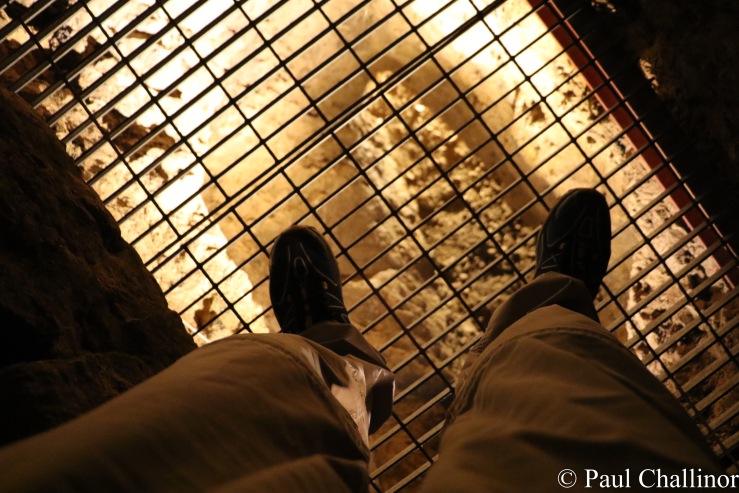We are still on the Great Orme at Llandudno, but this time we travelled back almost 4000 years to the Bronze Age copper mine near the summit. This isn’t on the Welsh 100 list but we think it should be. In 1986 the local council approved a scheme to landscape the derelict site full of spoil from Victorian mine workings. But before they started a survey was conducted to check the safety of the area. What they found was equally unexpected and spectacular. Underneath the piles of rock of soil heaps was a labyrinth of early mine passages dating back to the Bronze Age. Archeologists and covers have cleared and surveyed over 6km of passages in nine levels, but they think there could be as much as another 10km of tunnels still waiting to the discovered. Mind boggling at the very least. And a must for everyone to visit. The photos don’t really give justice to this massive undertaking.

It has been estimated that 1,800 tonnes of copper ore were mined out of the Great Orme, most likely to be smelted down and alloyed with tin to make bronze, a harder and more practical metal. The tin would have been from Cornwall, pointing to a strong trading culture within Britain at the time. Volcanic stones from the beach were used as hammers, then animal bones would have been used for more detailed work. It has been estimated that this amount of copper would be enough to produce 10 million bronze axes. Now that is a phenomenal volume. All dug out using bones and stones.

It is thought that supply from these mines might have outstripped demand domestically, and international trade would have been commonplace. By the Iron Age, a few hundred years BC, copper ore mining appears to have come to a stop at the Great Orme. The Romans, too, appear not to have been interested.

Bone tools – The neutral to alkaline conditions at the mine site and within the spoil tips help to preserve bone material, much of which is discoloured blue/green by impregnation of the copper carbonates solutions present in the ground water, or blackened by manganese solutions in the ground water. A marked proportion of these bone fragments exhibit wear and fracturing consistent with use as primitive scrapers, chisels and gouges to remove the rotted dolomitized host rock around the ore bearing material.

Stone tools – Over two thousand stone hammers/mauls have so far been identified. Typically ovoid in shape, and between 20kg to 29kg in weight, most are pebbles of igneous types common to local beaches. Wear patterns on the surfaces suggest a crushing or pound action taking place, and generally there is a low degree of modification for hafting.

It wasn’t until 1692 AD that mining started once more. Technology allowed water to be pumped out of the mines from a much lower depth than was possible in the Bronze Age. The copper produced was of very high quality. In the 18th and 19th centuries copper was highly in demand for the cladding of the bottoms of Britain’s wooden ships, including those of the Royal Navy. By the middle of the 19th century, ships were being made of iron and the demand for copper diminished. There was also competition from cheaper foreign copper ores.
The Great Orme copper mines began to decline c.1849, but continued to produce more than 1,000 tons of ore per annum until 1861. The final mining lease was given up in 1881.


Fabulous blog with interesting info. I love visiting Llandudno, and have walked the Great Orme, and around it from the West Shore to the pier.
LikeLike
Thank you Pete for your kind words. This started off as Abit of fun as we visit a number of places while in our caravan between running around the world with work. I’ve had a fastination for prehistory for as long as I can remember, and the copper mines had been on my list for a long time. No matter what your interest you can fail to be impressed with the industry that can be achieved with deer antlers and determination.
LikeLiked by 1 person
You are welcome Paul. Great work again.
LikeLike